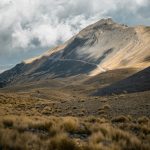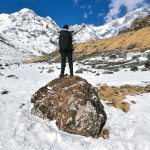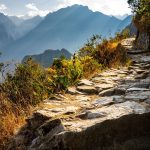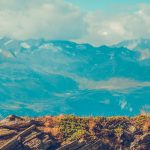Table of Contents
Patagonia isn’t just a destination – it’s a challenge, a proving ground, and for many, a lifelong obsession. While tourists crowd Torres del Paine’s W Trek, true wilderness awaits those willing to venture beyond the established paths. Here’s how to experience trekking in Patagonia to enjoy the beautiful mountains.
When Experience Trumps Instagram: Choosing Your Route
The most photographed routes aren’t always the most rewarding. The famous W Trek in Torres del Paine offers spectacular scenery but has become increasingly crowded, with prime campsites booking out months in advance. For similar grandeur with a fraction of the crowds, consider these alternatives:
The Huemul Circuit delivers Torres del Paine-level drama with perhaps 5% of the visitors. This challenging four-day route includes a glacier crossing using harnesses and pulleys, two river crossings, and views of the Southern Patagonian Ice Field that few tourists ever witness. The park administration’s strict requirements (mandatory safety equipment and experience verification) keep crowds thin.
For something truly remote, the Dientes de Navarino circuit on Isla Navarino offers the southernmost trek in the world. This five-day alpine route circles jagged peaks resembling teeth (hence the name), with views extending to Cape Horn and the Beagle Channel. The lack of facilities and challenging navigation means you’ll often have entire valleys to yourself.
Timing Is Everything: Seasons Beyond the Obvious
The conventional wisdom sends everyone to Patagonia from December through February, creating crowded trails and fully booked accommodations. Experienced trekkers know the shoulder seasons offer advantages worth the trade-offs.
Late October through November brings spring conditions with wildflowers transforming the landscapes and newborn guanacos taking their first steps. Wind speeds average lower than in summer months, though temperatures run slightly cooler. Most importantly, trail traffic drops dramatically, and the famous Patagonian light creates dream conditions for photography.
March through early April offers stable autumn weather with decreasing winds and spectacular fall colors as southern beech forests turn crimson and gold. Wildlife becomes more active in preparing for winter, and you’ll find solitude even on popular routes. The seasonal closure of facilities hasn’t yet begun, but crowds have vanished.
The Gear Reality: What Matters
Patagonia’s notorious weather demands quality equipment, but not everything marketed as “essential” actually helps. Focus investment on these genuine priorities:
Weather protection takes precedence over everything. Your shell layer must withstand both driving rain and the notorious Patagonian wind that renders umbrellas useless. Look for jackets with reinforced hoods and high collars that protect your face when fully zipped.
Footwear with solid ankle support and grippy soles proves crucial on routes with treacherous terrain. Many trails involve scrambling over loose scree or crossing streams on slippery rocks. Deeply lugged outsoles and mid-to-high ankle support prevent injuries that could end your trek miles from help.
For multi-day treks, your sleep system matters more than fancy camp cooking setups. Quality sleeping bags rated at least 10°F below expected temperatures allow recovery between demanding days. Remember that temperature ratings assume you’re using a sleeping pad with adequate insulation from the cold ground.
Navigation Realities in a Land of Extremes
Patagonia’s rapidly changing weather transforms navigation from routine to critical safety skill. Official maps often lack detail, and trails can disappear beneath snow even in summer. GPS devices provide false security if batteries die in cold temperatures.
Serious trekkers carry redundant navigation tools: detailed topographic maps in waterproof carriers, a compass with declination adjustment, and GPS devices with spare batteries stored in warm inner pockets. More importantly, they possess the skills to use these tools in challenging conditions.
The less-traveled routes often follow cairns (rock piles) rather than clear paths. Learn to spot these markers in different lighting conditions, as shadows can render them nearly invisible late in the day. When visibility drops, the ability to navigate by terrain recognition and compass bearing becomes essential.
Weather Windows and Decision Points
Patagonia’s weather doesn’t just change – it transforms. Blue skies can vanish within minutes as storms race up valleys unimpeded by terrain. Understanding weather patterns becomes a critical trekking skill.
Local knowledge proves invaluable. Rangers at park entrances provide current conditions, but experienced guides offer predictive insights based on cloud formations and wind patterns. The distinctive lenticular clouds forming over peaks reliably indicate increasing winds within hours.
Build flexibility into itineraries by identifying potential exit routes and sheltered camping alternatives. The most dangerous situations occur when trekkers press forward despite deteriorating conditions because they’ve failed to identify alternatives. Each morning, study both the sky and your map to identify decision points where route choices must be made.
Camping Strategies for Comfort and Safety
Campsite selection in Patagonia follows different rules than other trekking destinations. The primary consideration isn’t the view but protection from the legendary winds that have flattened countless tents.
Look for natural windbreaks like rock formations or dense tree stands. The lee side of large boulders provides significant protection. In treeless areas, seek slight depressions in the terrain that break the wind’s force. Always assume conditions will worsen overnight – a pleasant evening can transform into punishing winds by midnight.
Orient tents with their narrowest profile facing the prevailing wind direction (typically west). Use all guy lines, even in calm conditions, and reinforce stakes with rocks. Many experienced Patagonia trekkers carry specialized Y-shaped stakes that hold better in the region’s loose soil and gravel.
Wildlife Encounters: The Real Patagonia
While tourists cluster for guaranteed puma sightings in famous locations, the authentic Patagonian wildlife experience happens in quiet moments on less-traveled paths. Dawn hiking rewards with guanacos silhouetted against the rising sun and Andean condors catching morning thermals.
The Darwin’s rhea, a flightless bird related to the ostrich, frequents remote grasslands where few tourists venture. Huemul deer, critically endangered and painfully shy, occasionally appear in high valleys well away from established routes. These encounters require patience, quiet movement, and routes that escape the day-hiker crowds.
Learn tracking basics to enhance wildlife experiences. Fresh puma prints on morning trails indicate their nocturnal hunting routes. Distinctive guanaco latrines (they use communal bathroom areas) indicate nearby herds. These tracking skills transform a trek from a scenic walk to an integrated natural experience.
Cultural Connections Beyond the Trails
Patagonia’s human history adds depth to its natural drama. Before or after trekking, visit the small museums in gateway towns like Puerto Natales, Ushuaia, and El Chaltén. These collections provide context for the estancias (ranches) and shepherd refuges you’ll encounter on remote routes.
The region’s indigenous history remains less visible but equally significant. The Kawésqar and Yaghan peoples navigated these landscapes for thousands of years before European arrival. Some trekking operators now incorporate Indigenous perspectives through native guides who share traditional ecological knowledge and historical narratives.
Schedule time in local communities between treks. The small town of Puerto Williams offers the southernmost museum in the world, with artifacts from the Yaghan people who mastered survival in Earth’s most challenging environments. These cultural encounters provide valuable perspective on your brief adventure in landscapes where others made their permanent homes.
The Future of Patagonian Trekking
Whatever route you choose, remember that Patagonia isn’t simply a backdrop for adventure photos – it’s one of Earth’s most fragile and magnificent wilderness areas. The ultimate Patagonian trekking experience comes not just from conquering famous routes but from developing the skills and sensitivity to move through these landscapes with minimal impact and maximum appreciation.
The true measure of a successful Patagonian trek isn’t miles covered or peaks summited, but moments when the boundary between observer and landscape dissolves, leaving only the essential connection between humans and wilderness that has drawn explorers to these remote mountains since the beginning.

I’m Garrett, a seasoned photojournalist with a passion for uncovering the world’s hidden treasures. My journey is fueled by a deep curiosity for diverse cultures and breathtaking landscapes. When I’m not behind the lens capturing the world’s wonders, you can find me exploring underwater realms or sharing my passion for discovery with my two adventurous children.




